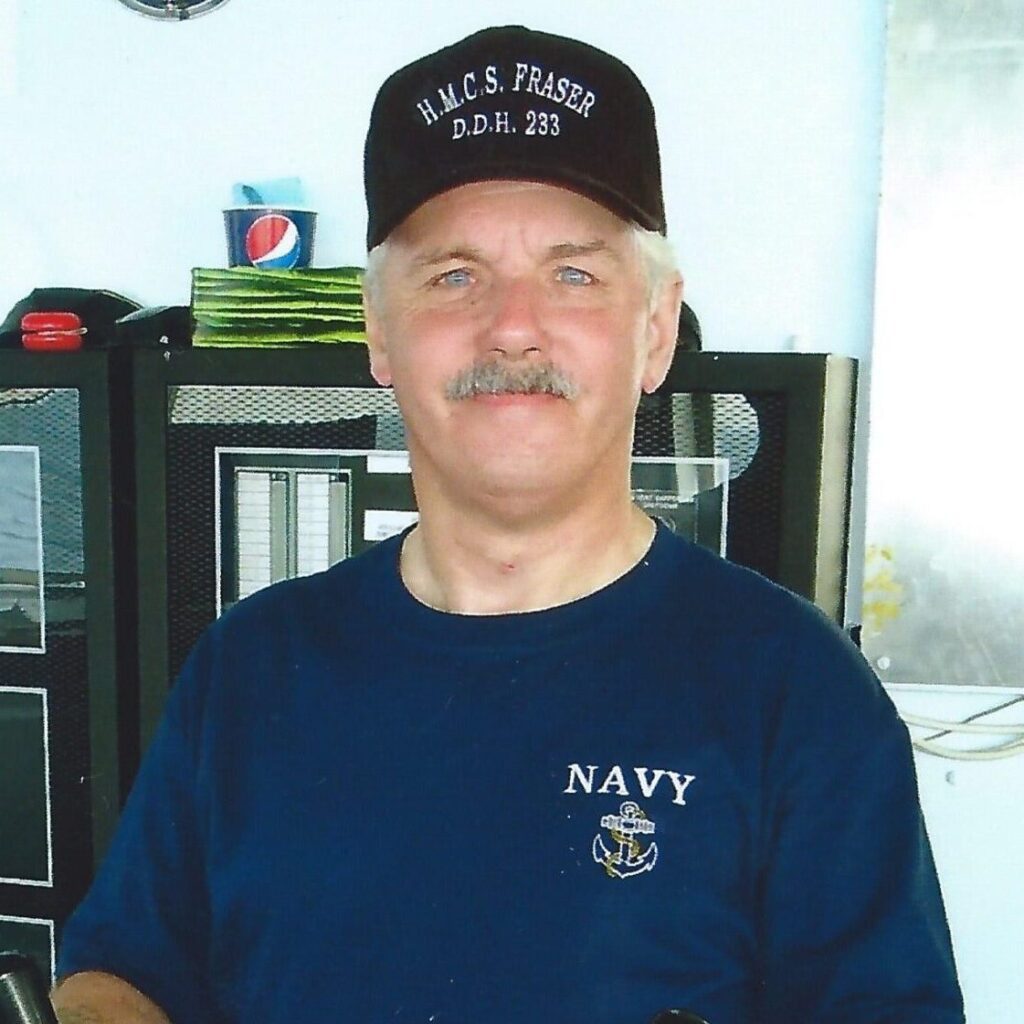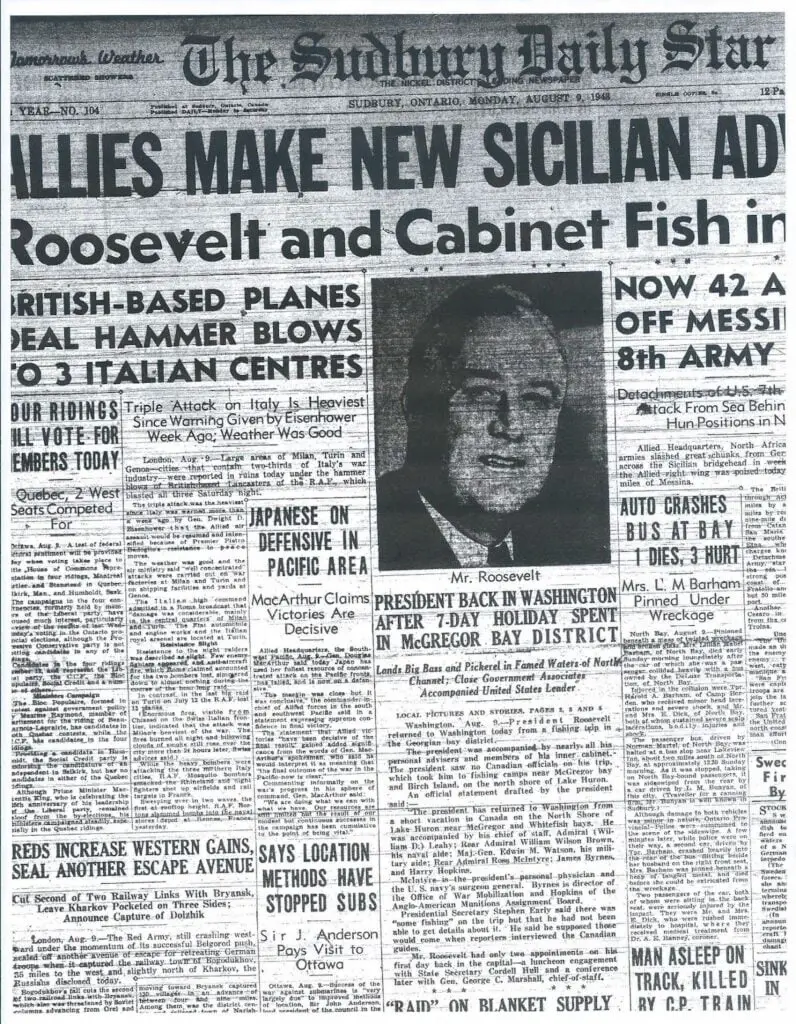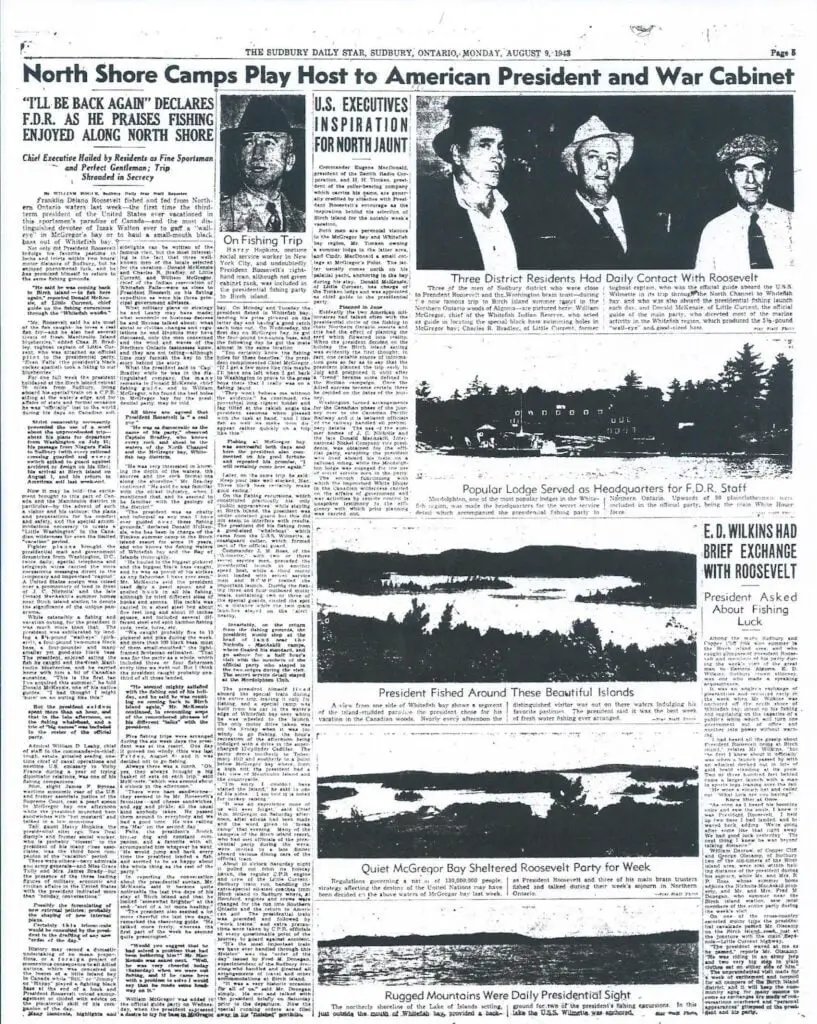Vacations have been on everyone’s itinerary at some point in their lives. Whether it be to exotic destinations around the world, summer holidays at the cottage, weekend getaways, or staycations at home, we all need a respite from the rat race of modern society.
My wife and I are no different. We have spent more than twenty years enjoying the splendour of Manitoulin Island. This oasis separates the larger part of Lake Huron to the southwest from Georgian Bay to the east and the North Channel to the north. It boasts an area of 2,766 square kilometres, making it the largest freshwater island in the world and Canada’s 31st largest by comparison.
Our main objective every year was visiting our cousins, Beverly and Harold in Spring Bay and Gail and Wally in Mindemoya. Wally has always been an avid fisherman throughout his life and, as luck would have it, took us out on Michael’s Bay (Lake Huron), West Bay (North Channel), and countless times on Lake Mindemoya. The fishing and ambiance are magnificent.
An interesting point – Treasure Island which is located on Lake Mindemoya is in itself, an island on a lake, on an island on a lake.
We have also spent many hours investigating every nook and cranny of Manitoulin Island, leaving no stone unturned in our quest for adventure. Visiting the many towns and villages strewn throughout the Isle and meeting the friendly inhabitants, Sharon and I have discovered not only the vast majestic scenery but a very deep, hidden secret that very few people have knowledge of, even to this very day. A secret so remote, the present-day residents are completely unaware. A secret involving World War Two, FDR, and a mysterious plane crash over Canadian waters.
Sharon actually got me interested in this voyage into history by introducing me to the novel, “A Man Called Intrepid”. Her Aunt Vi, who invited us up to her cottage in Spring Bay back in 1998, got the ball rolling. Arranging and assembling the tiny pieces of data that we have gathered over the past fifteen years or so has been very time-consuming during our limited stay on the island. Our “intrepid adventure” as a result, has revealed many historical facts. A story so untold in any history book will shock and amaze everyone.
The novel in itself was a stepping stone back in time. It was the key to unlocking a mountain of hidden information and what many World War Two veterans refer to as “The Secret War”. Much of what you will read came to our attention by literally tripping over the pieces of this intricate puzzle.
President Franklin Delano Roosevelt (FDR), 32nd president of the United States of America, through his actions at the height of the Second World War in 1943, was about to answer all of our questions posthumously, in a most profound manner. Information that had been hidden away for decades, in the annals of North American military institutions, was about to see the light of day.
The mystery behind a Moon Plane’s crash of what is believed to be the only Westland Lysander equipped with pontoons is awe-inspiring. Lysander Mk.IIIs were primarily used to fly over and land in occupied France where they would drop off spies and other clandestine operatives. Their fuselage was made entirely of wood, so as to go undetected by German radar.
The following unredacted historical document and newspaper articles depict the initial account of FDR’s secret trip to Manitoulin Island and were an integral part of our in-depth investigation. The documents were emailed to me personally by The Greater Sudbury Public Library (Newspaper Research Department) ([email protected]) and are available to anyone of interest. The link can be found below:
https://images.maritimehistoryofthegreatlakes.ca/114726/data?n=1
Our Investigation
Sharon and I have given this location a thorough look on several occasions during our vacations on Manitoulin Island. The results have been more than astounding.
On the upper floor of this establishment, behind the two windows on the far right, a small museum houses many relics detailing the store’s history and that of the surrounding area. In 1943 the CPR Telegraph Office of Little Current was located in what is now that museum. The Telephone exchange for the entire Manitoulin Island region took up most of the remaining upper floor. Stains from the batteries in use at the time still remain on the wooden floors.
As stated in the document, “So many fishermen needed bait, and they bought 2,000 worms from Turner’s store in Little Current, which, more than a half-century later, remains in business. Grant Turner, the proprietor, purchased half of them locally, from a Mrs. Kemsley in Little Current. These he sold to the presidential party for $10.00. He also bought 1,000 from the Skinner Bait Company in Toronto, and these cost $13.75, presumably because of the additional transportation costs.”
“Briefly, the CPR Telegraph Office of Little Current became one of the world’s principal communications centres at one of the world’s most critical moments. Between 29 July and 11 August, the presidential entourage sent two dozen telegrams for a grand total of $15.71 plus $2.08 in taxes. These went to such destinations as Washington, Detroit, Chicago, and Sudbury.”
There is no record of the contents of these top-secret messages anywhere, for obvious reasons. Furthermore, it should be noted, only military personnel with a top-secret security clearance would be authorized to operate the telegraph key. The regular civilian operators would be nowhere in sight.
The following photographs are included in our epic discovery, which literally shook us to the core.
Proof of his stay
Pictured here in a photograph that I took at Turners’ on July 9, 2012, is a map of McGregor Bay and Whitefish Bay as it appeared during President Franklin D. Roosevelt’s “fishing vacation” in 1943. It contains authentic signatures of President Roosevelt and of his entire military war cabinet.
Pictured here is a closeup of Franklin D. Roosevelt’s authentic signature, along with all the members of his military war cabinet, which was referred to at the time as “The Whitefish Bay U.S. Navy Exploring Expedition”. The “C in C” after Roosevelt’s signature is an abbreviation for his official wartime title, “Commander in Chief”.
Ladies and Gentlemen, upon seeing this map, I was completely overwhelmed with emotion and could hardly believe what was before my eyes. One of the most important and significant documents in wartime history. As I picked it up in my hands, I studied the map intensely. Every signature, every stroke of the pen, every tiny detail was scrutinized. This document told a story of such historical value that no one could fathom was true – until now.
Imagine, if you will, holding such a significant piece of wartime history that contains the signatures of many of the most important military minds of that time. A cornucopia of men who sought to turn the tide of World War Two during the critical summer of 1943.
To this day, as a reminder of that first event, I am still overpowered with emotion. So much so that my wife and I have returned to this little museum at Turner’s every time we vacation on Manitoulin Island to relive the experience.
The Truth Behind Plane Crash
If you recall, in the document it stated, “There he heard rumors of a presidential visit, of people who supposedly accompanied President Franklin Delano Roosevelt (including, according to some accounts, Lucy Mercer Rutherford and Winston Churchill) and of a plane which crashed and sank. Islanders reported that the Roosevelt visit was so secret that it attracted little or no attention in history books. Wallace organized a team of scuba divers which found the aircraft, now housed at the island museum on the east side of Highway 6, south of Little Current”.
The plane is actually on display in a building just a few meters to the left of these offices, with several other relics of the past. It is also noteworthy to know, the museum itself was dedicated by none other than former Canadian Prime Minister, Lester B. Pearson, who, by the way, was a King’s Messenger during the Second World War.
According to the museum curator and the documentation accompanying the aircraft, the plane itself did not actually crash. The military pilot attempted what is referred to as a “cold start”, causing the engine to backfire and igniting the wooden fuselage. Upon exiting the plane, the pilot remembered the sensitive top-secret documents contained in a briefcase. Rushing back into the burning plane, he managed to retrieve the item.
The plane eventually sank to the bottom of McGregor Bay after unsuccessful attempts to save it from a watery grave.
Concerned that sensitive instrumentation on this plane could fall into the wrong hands, U.S. Navy divers were sent down with explosive devices to blow up what remained of the instrument panel and engine components.
During our visit to The Centennial Museum of Sheguiandah, I made it quite clear to the curator that the engine was actually mounted upside down. The exhaust pipes should be on the bottom. I am not quite sure if this was accidental or a clever way to hide details by confusing the public.
As you can see, the U.S. military made very certain these components could not be made use of in any way, shape, or form by internecine individuals.
The True Purpose of FDR’s Visit
This story does not end here. What was the actual thought process behind Franklin D.Roosevelt’s Whitefish Bay, U.S. Navy Exploring Expedition to Manitoulin Island, beginning from August 1st to the 7th, 1943?
The document from The Greater Sudbury Public Library (Newspaper Research Department) states in the very first paragraph, “What was the truth to the rumors? Why would Roosevelt take a vacation, if the trip was really a vacation, during the critical summer of 1943? What could the presidential party really have been doing?”
By any stretch of the imagination, who would need two thousand worms on a fishing trip. That is precisely 166.7 dozen worms. Where would you store them and even more so, how would you keep them alive? How could Franklin Roosevelt possibly use up 2,000 worms when his so-called “fishing vacation” only lasted six days in the Canadian wilderness? Would his military entourage be wetting a line? No, of course not. They would be far too busy protecting the president of the United States and engaging in other military duties.
The Whitefish Bay U.S.Navy Exploring Expedition to Manitoulin Island was not only a prelude to the events in ten days’ time in Quebec City but a prerequisite birthing of plans for the D-Day invasion of Europe. The “fishing trip” to Whitefish Bay on Manitoulin Island was a convenient cover.
The First Quebec Conference – codenamed “Quadrant”
Quadrant – The First Quebec Conference
What would be known as the First Quebec Conference, codenamed “Quadrant” was a highly secret military conference by the governments of the United Kingdom, Canada and the United States. The conference took place in Quebec City, Quebec on August 17th. to 24th,1943 at the Citadelle and the Chateau Frontenac Hotel. The main representatives were Winston Churchill, Franklin Roosevelt and of course Canadian Prime Minister, William Lyon Mackenzie King.
Pictured behind King, Roosevelt and Churchill in the above photograph (left to right) are, General “Hap” Arnold (commander USAAF), Air Chief Marshal Charles Portal (Chief of the Air Staff), General Sir Alan Brooke (Chief of the Imperial General Staff), Admiral Ernest King (Chief of Naval Operations), Field Marshal Sir John Dill (Senior British Representative), General George C. Marshall (Chief of Staff US Army), Admiral Sir Dudley Pound (First Sea Lord) and Admiral William D. Leahey (Chief of Staff to Roosevelt).
Note: Admiral William D. Leahley was also present at The Whitefish Bay U.S. Navy Exploring Expedition on Manitoulin Island on August 1st. to 7th.,1943 and one of the signatories to the McGregor Bay and Whitefish Bay map mentioned above.
What was the reasoning behind this Top Secret meeting in Quebec City from the 17th of August to the 24th? What were the Allies planning? By delving into the document’s details, the answer becomes quite apparent.
According to Britannica, Churchill and Roosevelt were planning their fourth strategy session, Quadrant, in Quebec city beginning of the 17th of August. There they would discuss what to do next in Italy, prepare for the D-Day invasion of Normandy in the spring of 1944, and plan a strategy against Japan. Millions of human lives were at stake, and ongoing warfare until 1947 remained a possibility.
In essence, they were Initiating the plans laid out during Franklin Roosevelt’s “fishing vacation” to Manitoulin Island in Canada. The Canadian connection was complete and D-Day was a go.
Conclusion
I would like to point out some very important facts. The Allied forces used what is called, “Plain Language Code” during the war. Noting the above prices of $10.00 for 1,000 worms from a Mrs. Kemsley of Little Current and $13.75 for the other 1,000 worms from the Skinner Bait Company in Toronto and considering there were 2,000 ships and other amphibious watercraft that took part in the D-Day invasion of Europe, it would be safe to say, this is what was in the works when President Roosevelt was on vacation on Manitoulin Island. The prices themselves could well indicate times or other information consistent with wartime operations.
“Toronto” was also code for Camp X, the Secret Special Training School No.103, a British World War Two paramilitary installation for training covert agents (Spies) in methods requiring successful clandestine operations. It was located on Boundary Road in Oshawa/Whitby Ontario on the shore of Lake Ontario, on what is now called “Intrepid Park.
Other places named such as Sudbury, Detroit, Chicago, and Washinton were more than likely codenames for operatives working under the guise of the British Security Coordination headquartered on the 35th and 36th floors of the International Building at Rockefeller Center, New York, New York during World War Two.
All in all, “The Tale of Two Thousand Worms” does have an ominous tone and will remain as an indelible “Fishing Vacation” in the annals of history.
Sources:
The Greater Sudbury Public Library (Newspaper Research Department)
Turner’s Department Store Museum in Little Current
The Centennial Museum of Sheguiandah,








One Response
I was just talking the other night to our neighbors about how my father Robert E. Moran, USN, was at the Whitefish Bay . . . with President Roosevelt. Dad was the acting captain of the Anna H. for a couple weeks. Dad use to tell us how he threw his dog Fala into the water several times. Somewhere we have a written statement talking about this time of his naval career.